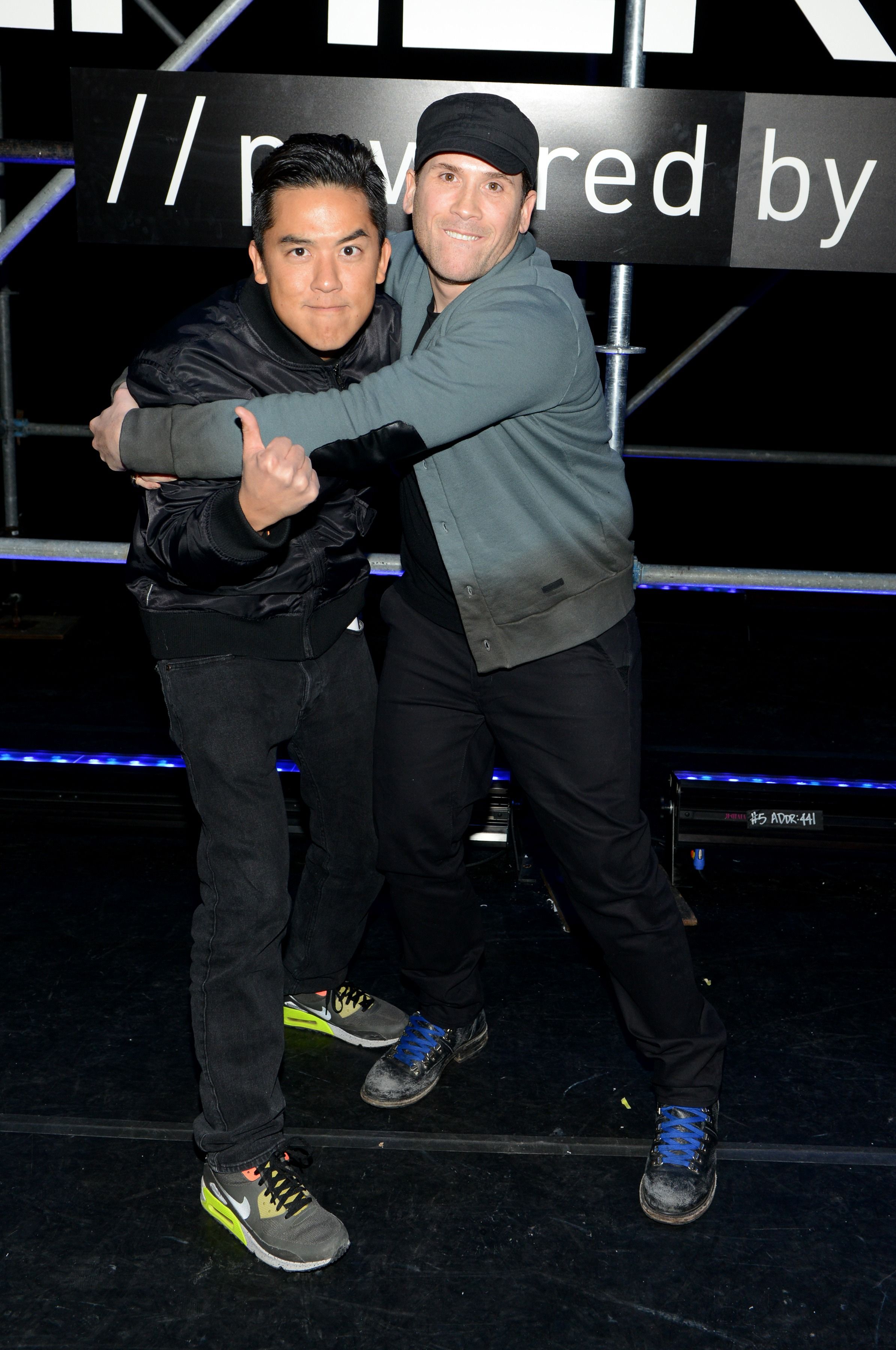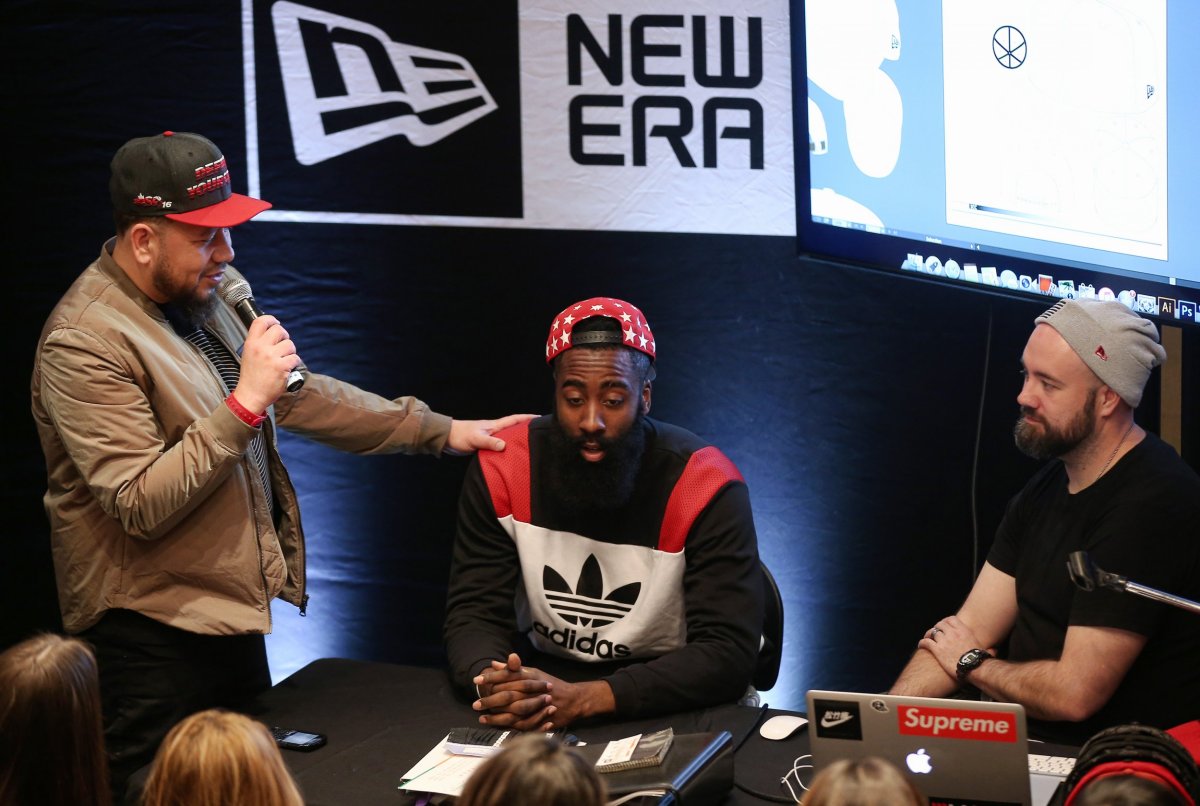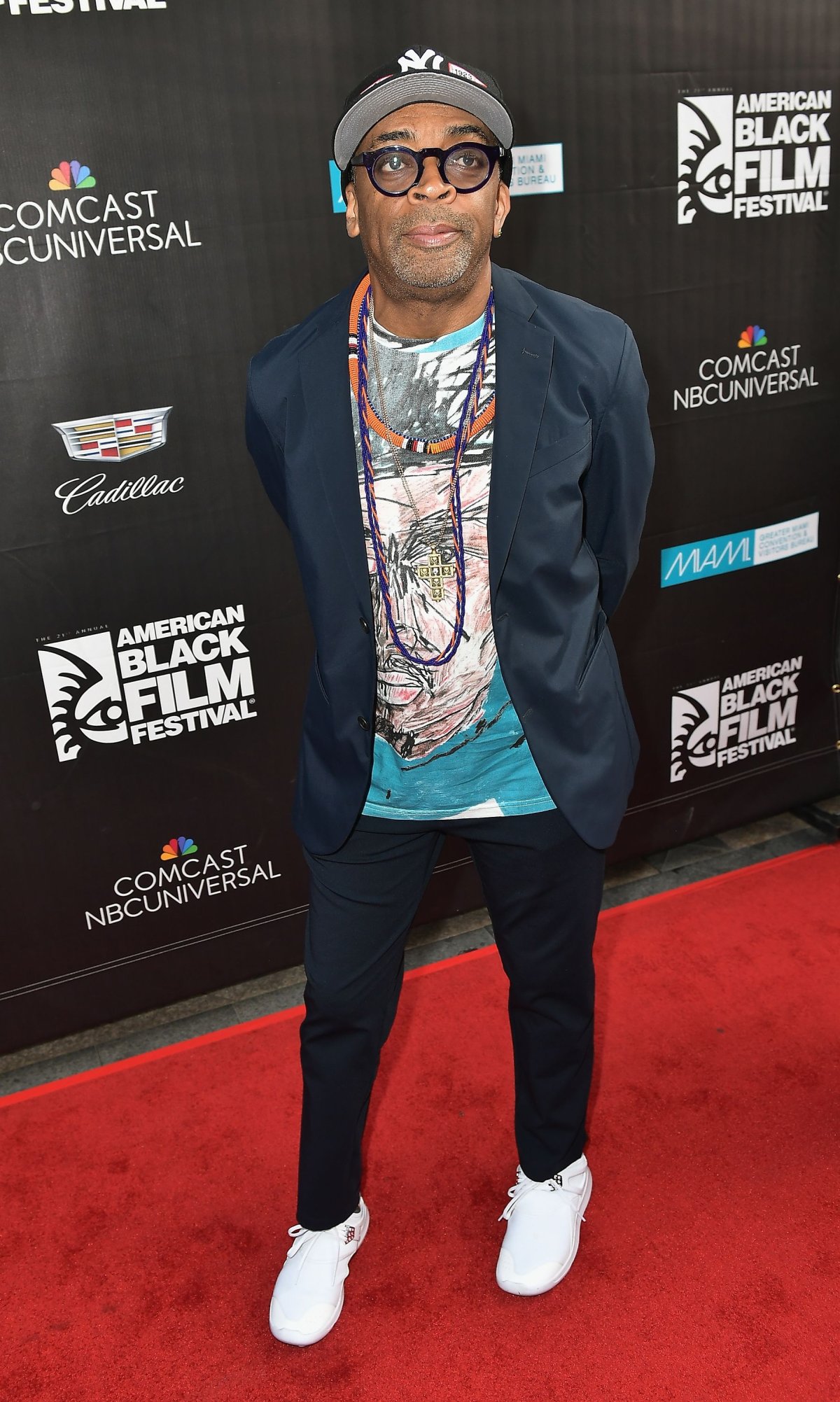
The term "streetwear" sounds pretty innocuous. To the uninitiated, it could be synonymous with "casualwear." But to the designers and consumers familiar with the concept, streetwear is a fashion aesthetic, a persona and a lifestyle rolled into one—and it has become a domineering force in style trends for millennials.
Originating in the early 1980s from the skate-punk culture of Los Angeles and the growing hip-hop movement in New York, streetwear is often associated with graphic T-shirt designs, pricey sneakers, glossy bomber jackets and modified baseball caps known as snapbacks. It's synonymous with brands like Supreme, known for limited-edition clothing lines that spark fans to line up outside its flagship stores for hours. Everyone from Rihanna to the Kardashian/Jenner clan has worn some variation of streetwear, further promoting it through their closely followed Instagram accounts, and its influence only appears to be growing.
But according to streetwear designer Bobby Kim, the core of streetwear is something much more essential and survivalist. In his new documentary film, Built to Fail: A Streetwear Story, which premiered this past weekend at the Los Angeles Film Festival, Kim traces the trend's aesthetic and cultural origins in his hometown of L.A., interviewing pioneering designers such as Rich Klotz, the founder of Freshjive, and Tommy Hilfiger, who helped bring streetwear to the mainstream in the 1990s. Kim, who co-founded the brand The Hundreds (he's known in the streetwear community as "Bobby Hundreds"), frequently brings up the egotistical nature of streetwear culture, citing how he and his business partner Ben Shenassafar fought to get their shirts sold at the popular Hollywood retail store Fred Segal.
"Our methods sound outrageous and pretty crazy, but that's a very streetwear approach to doing business," Kim tells me. "And it's not unique to The Hundreds, it's not unique to the other brands in this film. If you're in streetwear and you're down and about it, you know exactly what I'm talking about."
Here's Kim on streetwear's evolution, its relationship to ego and how social media has changed the industry.
So what does streetwear mean to you and how did you get into it? In the film, you talk about how it's a very fluid term…
For me, getting into streetwear, that was back in the mid-'90s. It wasn't even called streetwear [back then], it wasn't looked at as "streetwear." It was these independent T-shirt brands. I come from a punk and hardcore background, and I've always been unresponsive to whatever's happening in the mainstream. At that time, skateboarding was becoming more urban, and those [skateboarding T-shirt] companies were becoming more corporate, more mainstream. I really appreciated the smaller, artist-driven, independent T-shirt labels—number one, because I'm supporting a fellow artist, but number two, I'm wearing something that no one else has. I feel special.
Over the years, that genre of clothing got to be known as streetwear. But really, to me what it meant, always, was this independent spirit. It was very defiant. It was very exclusive. In the course of making this documentary, what I learned was that streetwear isn't necessarily just one genre of clothing. It's not just an aesthetic, it's not necessarily a certain style or a brand. It's a community, it's a culture, it's a history and all these people's different stories. You can't really appreciate streetwear outside of considering that culture.
Streetwear has its roots in L.A. skater culture and New York hip-hop culture. What was it about both cultures that allowed them to fuse and create this one specific culture around clothing?
They both drew on this independent, counterculture spirit. When hip-hop started in the late '70s in New York, that was a way for the inner-city black community to reach out and to be heard. They weren't being listened to, so they had to find a way to be heard, to stand up and make themselves vocal. Skateboarding was a means of misplaced and displaced youth looking at their environment and figuring out ways of turning surf [culture], and the more counterculture attitudes of punk, into a sport. And that turned into skateboarding.

It's very youth-spirited, both of those movements, and so is streetwear. These types of defiant youth are always looking at the structure, the dominant hegemony that's come before, and they're saying, "Look, I want to live differently than the way my parents did. I think I know it better, and I want change." So it's about this progression, it's about leaving the rules and standards and what society gives you and making something different and better.
The idea you explore throughout the film is how streetwear is about putting a unique "personal brand" out there. You have it on the design end of the culture, where artists are making their own T-shirt designs, and you also have the consumers coming up with their own personal style. Why do you think that's such a huge part of the culture?
Streetwear also has a lot of similarities to graffiti in that it's very ego-driven. Very self-centered. It's very focalized around a young ego saying, "Listen to me, look at me, I exist." That's just branding in general: "I want the world to know that I'm here. Maybe my parents don't acknowledge me, maybe I'm invisible at school, but I'm important. I'm different from everybody else." I don't know if that answered your question, but I think that's what it is.
Definitely. You also talk about how that might be the reason there aren't that many female designers in the industry, because it's such a male-dominated, ego-driven space.
Yeah, I think [women] are more comfortable with their ego and don't have to express it in such a way where…Like, the men are like cavemen, just stomping around, "rawr," setting fire to things. In the genre of hip-hop, it's always been predominantly male-driven. Skateboarding, predominantly male-driven. So the fashion that comes out of it is going to be, again, predominantly male-driven.
I think that's changing, thankfully, and dramatically. Now we're seeing new language enter into streetwear and skateboarding and hip-hop, because we're having more representation by women, by powerful women. And thank the internet for that. Also, it's not just women, but people of color, LGBT…it's all happening, and again, big thanks to the internet.
But in the course of this movie, if you look at it, a lot of [the designers] are white men. Straight white men. That's how I always felt growing up, looking up at all my favorite designers—it's all Orange County white men. On the urban side, the face of [streetwear] was young black men. But I never saw anyone who looked like me. I never saw anyone who looked like the women around me. I'm glad to see that that's starting to change. I think that streetwear is really leading a lot of that movement.

How do you think the internet in particular has shaped streetwear? How has it changed the distribution and the culture of it? How do you think this concept of a "personal brand" has evolved with social media and how people choose to express themselves online?
I think it compliments it very well. With social media, to have a profile means to have your own personal brand. And my philosophy on branding has always been inextricable from representing and portraying yourself and carrying your own flag. As soon as you build an Instagram page or a Twitter bio, you have a brand. So with streetwear brands, it's the same thing as having a social media profile, and it's very easy for a kid to have a social media page, print some T-shirts…and now you have a streetwear brand!
And that's fine, that's totally cool with me, but that's also why streetwear has gotten so popular and so mainstream over the last few years. It's that anyone can print a T-shirt, anyone can express themselves on a T-shirt and sell it to some friends. Even when we were doing it, it was very complicated—finding a screen printer and all that. Now there are apps. You can upload a photo and print a shirt. It makes a lot of sense that streetwear and social media are both blowing up hand in hand.
I read that you started your own brand partially through blogging, and you talk a bit about that in the film. How did you go about fitting your own story into this greater narrative about the history and culture of streetwear? Why do you think it was important to tell?
I didn't want to talk about it too much. It wasn't supposed to be a commercial for the brand or anything like that. But being a filmmaker, I did think I had a unique angle and perspective on the whole thing. It would've been cool for someone who's objective and outside of the industry to make a streetwear documentary, but I don't think they would've understood the nuances, and the self-reflection, and all the introspectiveness that we think about as brand owners and designers. All these little things.

From the outside, streetwear is just this cool thing, all these young guys lining up outside stores buying expensive sneakers. But when you're in it, it can be a pretty harrowing, daunting experience. It's not for everyone. The vast majority of brands and designers—they don't last. I've been in it for 14 years and I've seen enough cycles now, I know enough of the people who've established this subculture. And I've met the new kids of this generation. So I have a pretty good perspective on everything.
Do you think that sort of obsession—lining up outside stores, people finding boutiques and then not sharing them with their friends because they want it all to themselves—is essential to the culture? Or is it more of a superficial quality?
I think it's essential. You know, it's part of the game. When kids are doing that, what they're doing is chasing exclusive and rare products. And the reason why they're doing that is because they want to wear, or have, or sell, something that nobody else has. It's this elitist, almost cooler-than-thou attitude that streetwear kids have. "Oh, you're wearing that? You can buy that anywhere. That's available everywhere. This, that I'm wearing, you had to wait outside a shop for a week to get. Or this, you had to travel to Tokyo to buy." Again, it's like being able to say, "I'm different from you and I'm special because of what I'm wearing."
The film is called Built to Fail, which sounds pretty pessimistic. But toward the end of the film you take this optimistic viewpoint toward the future of streetwear. And this is after all these guys you interviewed saying they lost money in the business, or that they'd discourage young people from starting their own brand. So what makes you so hopeful about it?
I called it Built to Fail because I think the idea of streetwear is built to fail. To try to approach this brand, building a brand from a traditional business perspective, is built to fail. Even the way that we built our brand for 14 years—it makes no sense on paper. Traditional businessmen look at it, they don't understand the look. The whole thing shouldn't make sense.
But the reason why it can work, and does work, is because of the heart and the passion and the ingenuity that these creative young people bring to streetwear. And so while the idea is "built to fail," that doesn't mean that it will fail. And I think that says something about the spirit of these kids that get into this thing, that they're like, "Look, I know that this might not necessarily work, the odds are stacked against me, but I'm going to be the one to overcome them. I'm going to be the underdog that becomes the champion."
That's what makes me so hopeful and positive about it all, is that I look at this young generation, and I'm like, man, they're dreamers, they're passionate and they don't really care what the older generation has to say. If you watch the film, it's cyclical. Every 10 to 15 years it happens again. Another set of brands comes in, they all think they're doing something different. Only a few of them make it. Of the few, only one of them survives, the rest of them die and then the whole thing starts all over again. Nobody learns from the history, because every generation that comes in is so ego-driven and has so much bravado. That's really inspiring to me, even though I've been doing it for so long. I think we can all learn from that youthful spirit.
Uncommon Knowledge
Newsweek is committed to challenging conventional wisdom and finding connections in the search for common ground.
Newsweek is committed to challenging conventional wisdom and finding connections in the search for common ground.
About the writer
To read how Newsweek uses AI as a newsroom tool, Click here.








